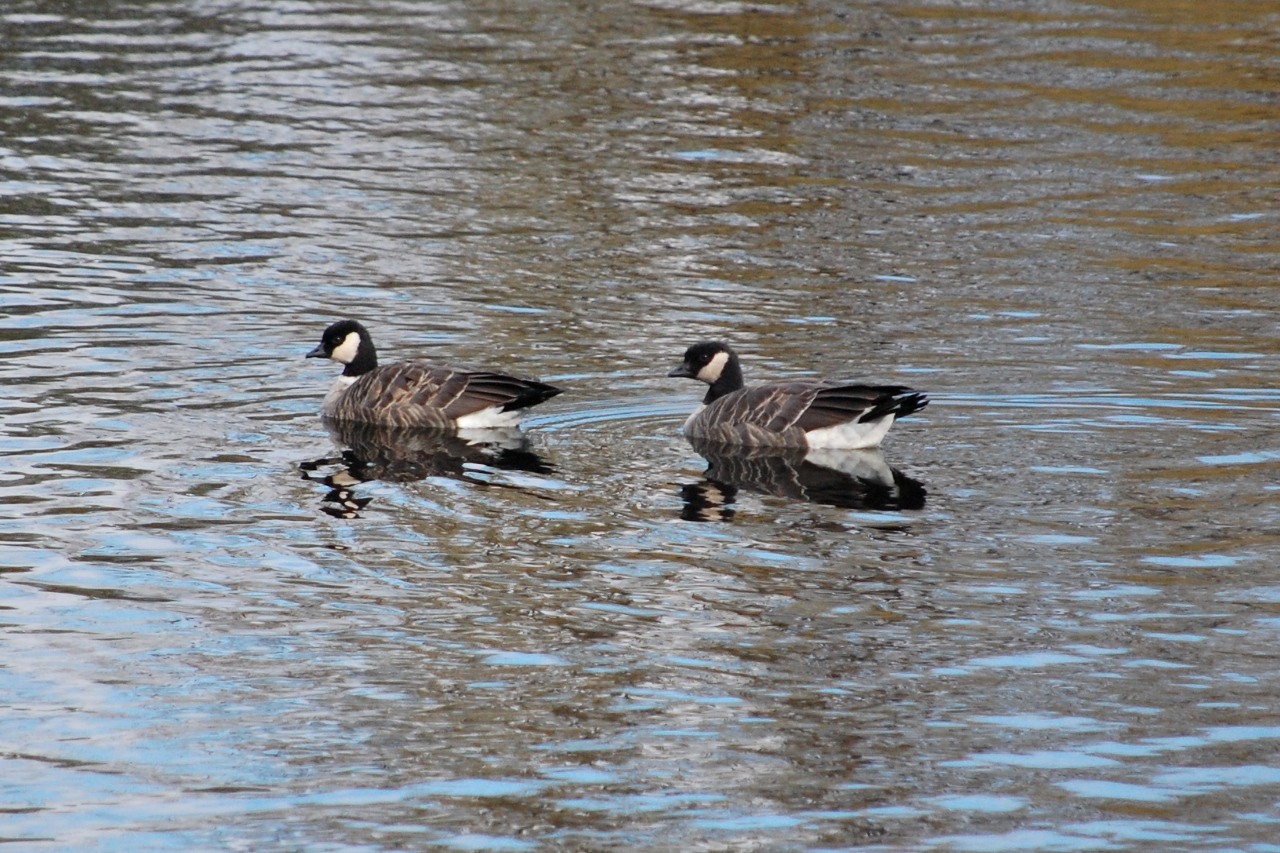Cackling Goose
A species of Black geese Scientific name : Branta hutchinsii Genus : Black geese
Cackling Goose, A species of Black geese
Botanical name: Branta hutchinsii
Genus: Black geese
Content
Description People often ask General Info
 Photo By J Jongsma , used under CC-BY-SA-2.0 /Cropped and compressed from original
Photo By J Jongsma , used under CC-BY-SA-2.0 /Cropped and compressed from original Description
The black head and neck with white "chinstrap" distinguish this goose from all other geese except the larger Canada goose (Branta canadensis) and the similarly sized barnacle goose (B. leucopsis). There are up to 5 subspecies of cackling goose, of varying sizes and plumage details. The female looks virtually identical but is slightly lighter and has a different voice. Some are hard to distinguish from the Canada goose, with which the cackling goose was long assumed to form one species, the cackling goose and the smaller Canada goose subspecies being called the lesser Canada goose. The smallest 1.4 kg (3.1 lb) Cackling geese (B. h. minima) are much smaller than any Canada goose, but the subspecies B. h. hutchinsii, at up to 3 kg (6.6 lb), grows to the same size as some Canada geese. The distinctness of the extinct population of the Komandorski and Kuril Islands B. h. asiatica is controversial. The barnacle goose differs in having a black breast and grey, rather than brownish, body plumage. Measurements: Length: 24.8-25.6 in (63-65 cm) Weight: 49.3-84.0 oz (1398-2380 g) Wingspan: 42.5-43.7 in (108-111 cm) 
Size
56-76 cm (22-30 in)
Colors
Brown
Black
Gray
White
Life Expectancy
20 years
Nest Placement
Ground
Clutch Size
2 - 8 eggs
Incubation Period
1 brood
Number of Broods
25 - 28 days
Feeding Habits
Cackling Goose primarily consume plant matter including grasses and aquatic plants, supplementing with grains, insects, molluscs, and crustaceans. They graze by walking and pulling plants with serrated bills, and forage by tipping forward in water. Cackling Goose forage in family groups and migrate collectively to exploit various food sources.
Habitat
Cackling Goose predominantly inhabits northern, open landscapes, often found in artic and subarctic tundra regions during breeding season. They nest on small islets amid tundra ponds, surrounded by a rich selection of grasses, sedges, and various flowering plants. In the Aleutian Islands, cackling Goose prefer the slopes above coastal cliffs for nesting. They thrive at various altitudes, from sea level in the Aleutians to alpine zones in the tundra. During winter, they migrate to temperate fields, marshes, and lakes.
Nest Behavior
Females select the site and build the nest by scraping and shaping a ground depression, laying eggs amidst the lining process. Parents exhibit dedicated care for eggs and hatchlings.
Nest Characteristics
Cackling Goose's nest is located in tundra areas, typically on elevated dry patches or islands in tundra lakes. It is constructed from grasses, sedges, twigs, leaves, lichens, mosses, and lined with down feathers. The inner bowl is approximately 6 inches across.
Dite type
Herbivorous
People often ask
General Info
Feeding Habits
Bird food type
Behavior
Cackling Goose are known for their life-long pair bonds, typically mating as they approach their nesting areas in the spring. These birds exhibit strong territorial instincts, with both sexes actively defending their chosen nesting sites. Territorial boundaries can be quite small, especially in regions where nesting space is limited, such as the Aleutian Islands, resulting in the formation of dense nesting colonies. Conversely, in less congested areas, cackling Goose may nest in relative solitude. Daily activities involve foraging, preening, and vigilant territorial defense.
Species Status
Not globally threatened.